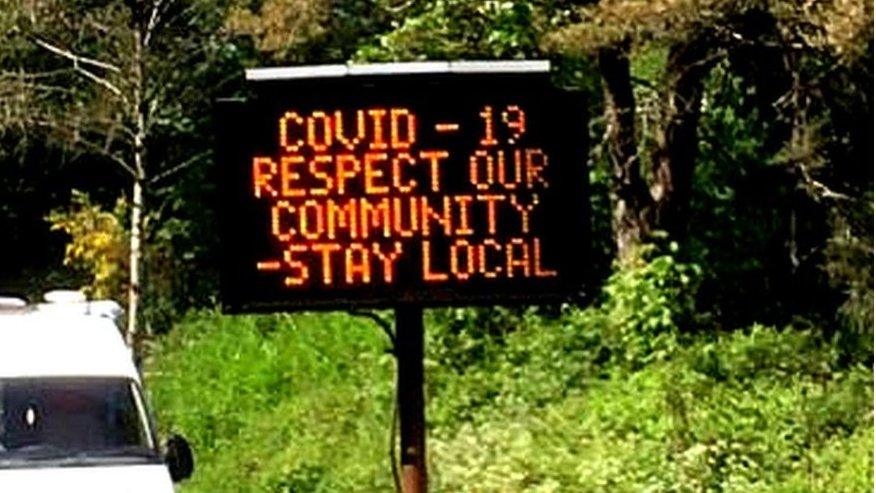Coronavirus: Is cross-border traffic a significant risk?
- Published
- comments

With coronavirus infection rates falling in Scotland, is it possible that new cases could be imported from parts of England where the virus is still more of a problem?
The Scottish government has warned about a general rise in traffic in spite of lockdown.
But is cross-border traffic a significant risk?
Possibly the best way to determine this is to look at the data compiled by automated traffic counters, external.
Transport Scotland currently operates nearly 80 of these across Scotland - albeit with none in the Western Isles, Shetland or Orkney.

So while there aren't counters on every trunk road - including the A74 from Gretna Green - the data does at least give us interesting insight.
It also arguably gives us a better picture than the limited mobility data released by Google.
Right away we can see that there are only seven counters on the roads in Dumfries and Galloway, and the Scottish Borders - the councils touching the English border.
The busiest of these counters near the border was on the A1 near Burnmouth (7,202 "trips"). This could be potentially due to Scottish or English residents commuting to/from Edinburgh and Berwick-Upon-Tweed.
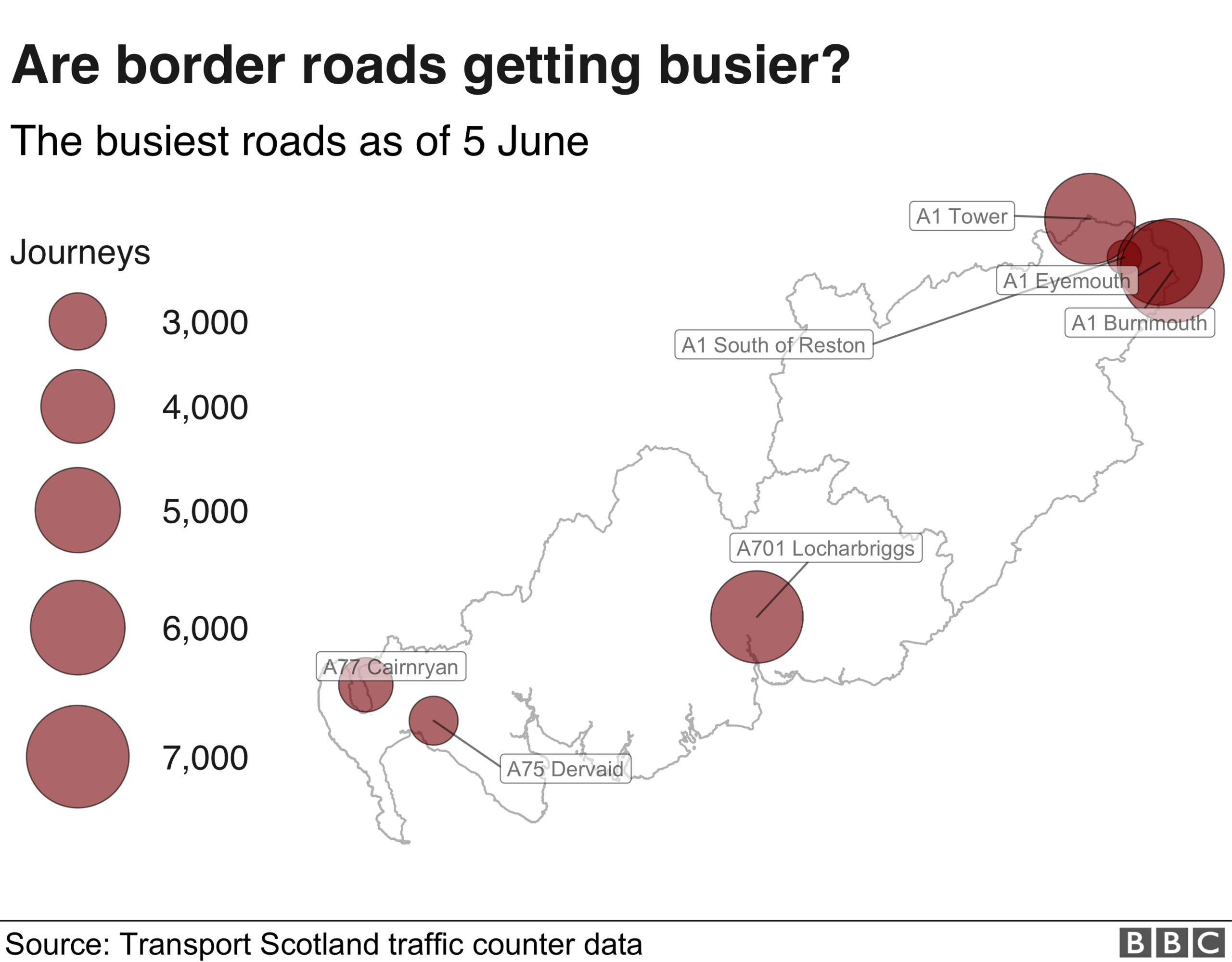
The second busiest border road was the A701 near Locharbriggs with 5,740 "trips" recorded. Again, this could be down to commuters to Dumfries, or possibly drivers using the road as an alternative to the M6 from England?
However, this doesn't tell us which monitored border road has seen the biggest increase over time.
If we compare traffic between 27 March and 5 June we see the largest increase (73%) in lockdown traffic was actually on the A1 near Eyemouth.
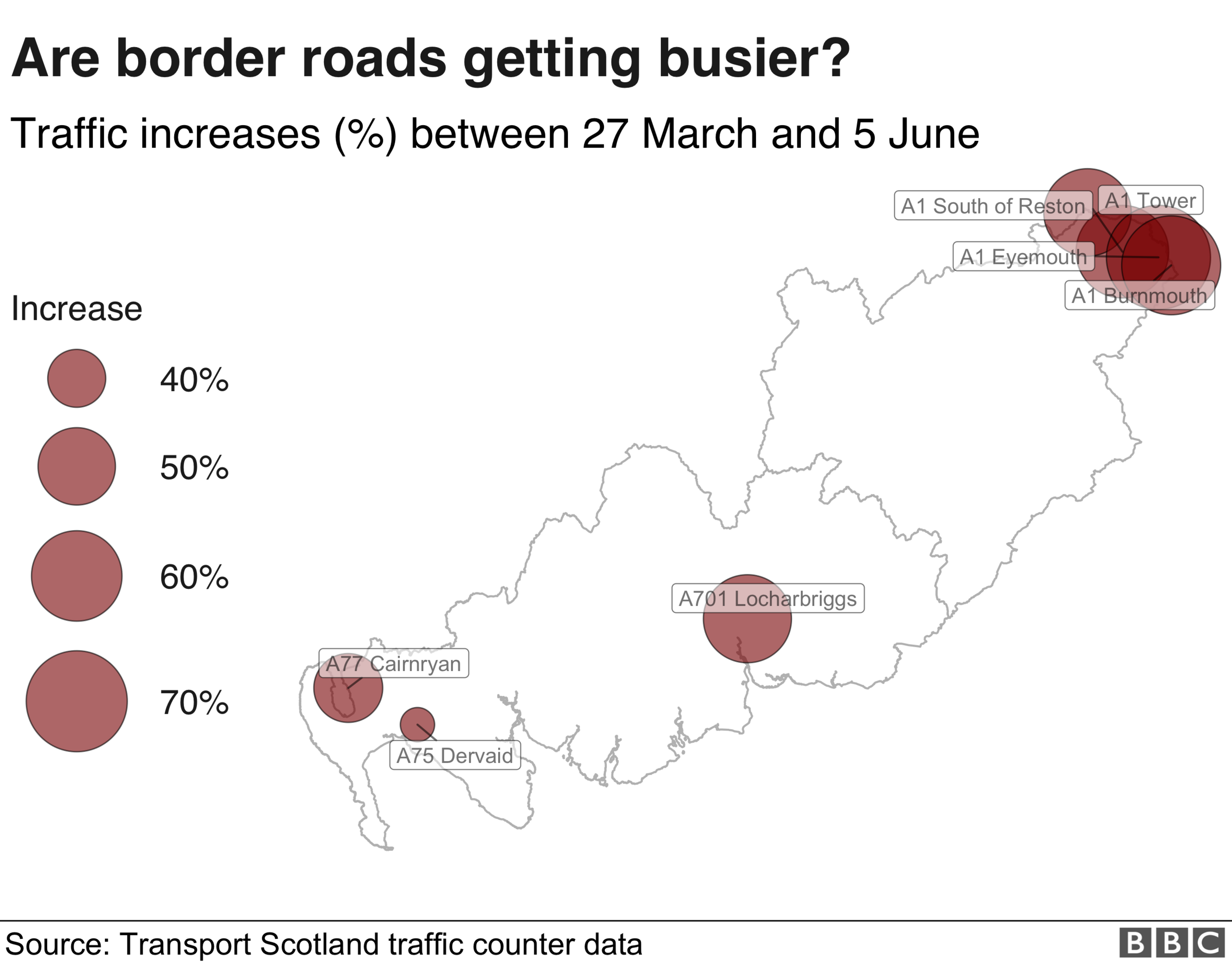
So far this picture would appear to confirm that not only are Scotland's border roads getting busier, but that there could be some legitimacy to concerns over coronavirus being spread north.
An article in The Times, external stated "there were 282 deaths in northwest England in the final week of May...the highest in the UK".
But the alarming headline about thousands of people driving north from areas of increased infection rates is rather disingenuous.
Firstly, certainly Transport Scotland's counters are widespread, and not on all major roads coming into the country.
Secondly, there's no way of knowing whether these are English residents travelling into Scotland - these could quite easily be Scottish residents out for a scenic drive on the A1.
Thirdly, traffic has increased significantly more elsewhere in Scotland.
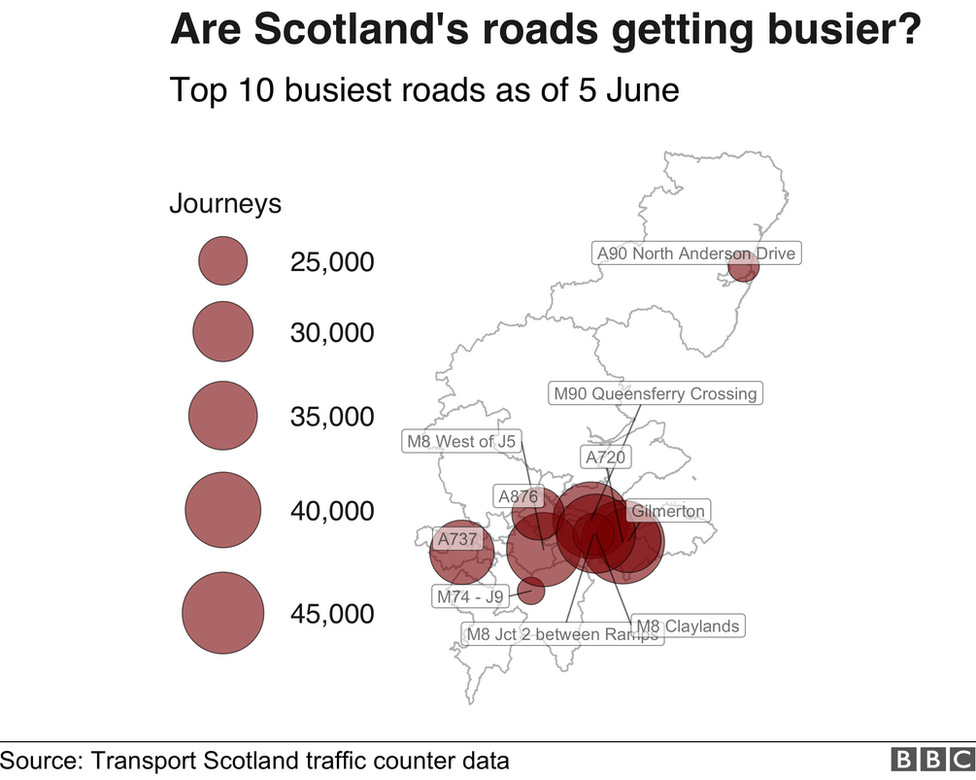
Compared with the monitored roads in Dumfries and the Scottish Borders, traffic numbers are far higher across the central belt.
The City of Edinburgh bypass (A720) carried 46,463 vehicles on 5 June.
And the counter on the M8 near Claylands counted 42,757 trips.
But again, a better metric to look at is not the total number of journeys, but rather the overall increase in traffic.
This paints a different picture of where traffic has increased significantly - and it's not the border roads or Edinburgh roads.

Traffic on the A77 near Ayr has skyrocketed by 233% between 27 March and 5 June with an increase of 12,000 daily journeys.
This could be down to increased traffic to Prestwick airport, Ayr beach, or people going for a scenic coastal drive.
Traffic on the B924 also jumped by 118% - presumably due to its proximity to the Queensferry Crossing Bridge.
The A84 near Doune, and Stirling castle, saw a rise of 103% in traffic - an increase of nearly 3,000 trips.
And trips on the A82 by Loch Lomond have jumped by 91%, presumably due to crowds swarming to the popular beauty spot last weekend.
But is this increase in traffic a recent trend with the lockdown restrictions having just been eased?
Sadly, the data shows that traffic was already increasing weeks before First Minister Nicola Sturgeon formally announced the start of phase one on 28 May.

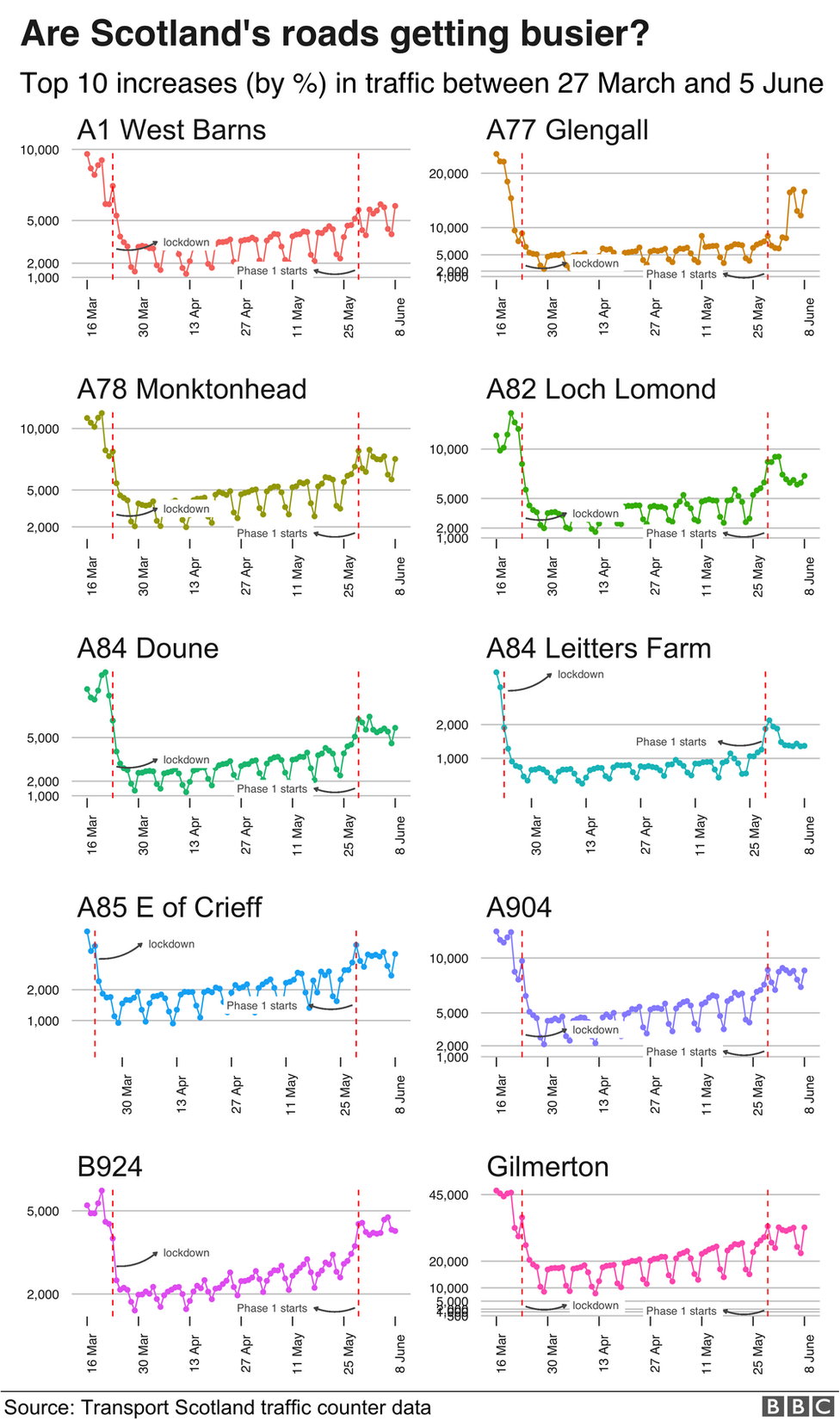

We can see this steady increase by looking at the 10 roads with the largest increases overall since 27 March.
The largest spikes occurred on 28 May - presumably with people enjoying their new-found freedom.
However, we can see that peaks of activity typically occur on weekdays - suggesting more people may be returning to their workplaces already.
And the troughs seem to nearly always fall on Sundays.
So while the increase in traffic is increasing, based on this data there seems little evidence to back up any fears that coronavirus is being spread from parts of northern England that have a higher infection rate.
- Published28 May 2020
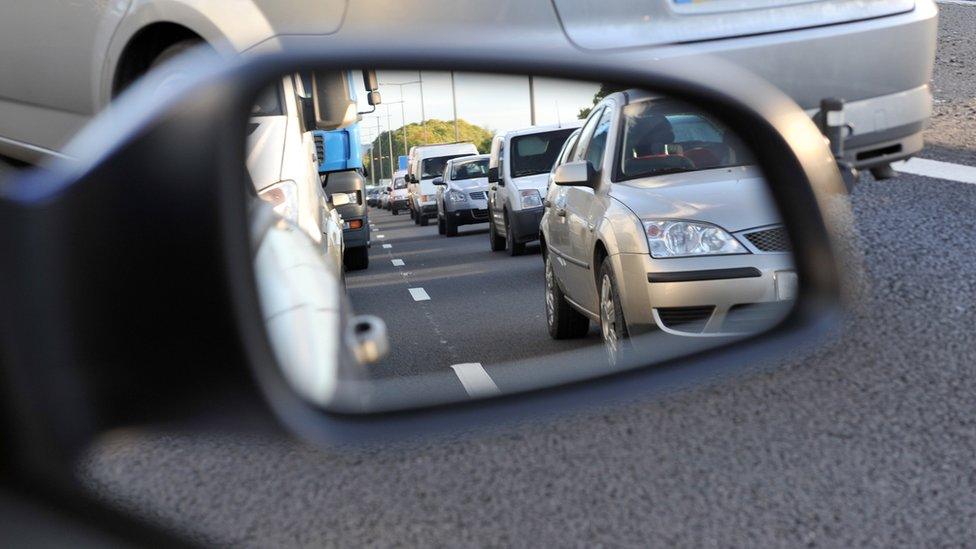
- Published6 June 2020
